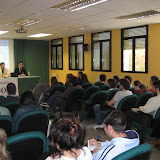What if we could calculate our own real-time customized “official indicators”
Note: This article is a translation of what I wrote in Spanish for the International Open Data Conference 2016 blog. You can read the original post in spanish: ¿Y si todos pudiésemos calcular nuestros propios “indicadores oficiales” personalizados en tiempo real and in english: What if we could calculate our own real-time customized “official indicators”?.Almost all governments worldwide and multilateral institutions such as OCED, the UN, the World Bank or the European Commission began their open data policies with the release of the statistic datasets they produce. Because of that, we have a big amount of indicators we can work with in reasonably accessible formats to study almost any issue, either environmental, social, economical or a combination of all these aspects.
Besides providing us with the datasets, in some cases they have created tools to access the data easily (APIs), and even applications that help us work with the indicators (visualizations).
These indicators follow periodic cycles which can happen monthly, yearly or even multiannual perdiods due to the high cost of their production. In general, the methodologies used to calculate the indicators are not available for citizens. In the best-case scenario, they are documented in a very superficial way on their fact sheet.
 |
| Photo by William Iven |
Besides, this would remove the possibility for anyone to get privileged information, considering that we all could have the same ability to analyze the evolution of the indicators to take our own decisions. Even more, we could customize calculations according to our own particular situation by working on the methodologies.
The fact is that in many cases, the production cycle of some indicators could be shortened until we get closer to ‘real time’, and the cost of production could be reduced greatly as well thanks to open government data.
Even though this is a big step ahead, I don’t think we should settle down with having the indicators as open data; we should aspire to examine the open datasets and methodologies used to calculate these indicators and even customize them, because if conveniently anonymized there is no reason for them not to be released as open data.
















